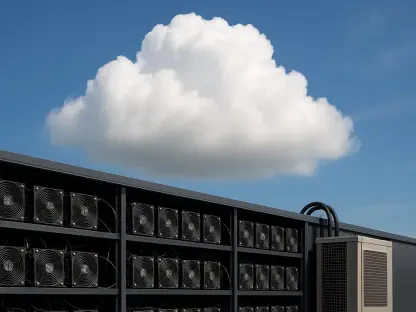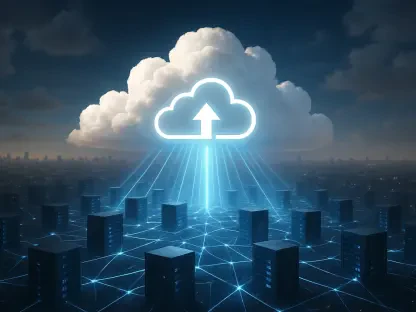The state of Georgia is on the brink of a significant transformation in its energy landscape. With the rapid expansion of data centers driven by advancements in artificial intelligence and other data-intensive industries, Georgia Power, the primary utility company, is forecasting a substantial increase in electricity demand. This surge in energy consumption necessitates strategic planning and considerable investment to expand the state’s energy capacity, posing challenges and raising concerns among various stakeholders.
Projected Growth in Electricity Demand
The Surge in Data Centers
Georgia Power predicts that the state’s energy consumption will triple within the next decade. This dramatic increase is primarily attributed to the growth of data centers, which are essential for supporting the burgeoning artificial intelligence sector. These data centers are part of what Georgia Power refers to as the nation’s “second industrial revolution,” highlighting their critical role in the future economy. The rapid expansion of these facilities signifies a tectonic shift not only in Georgia’s power requirements but also in its economic landscape, driving significant policy and infrastructural changes.
The projected increase in energy demand represents a massive challenge for Georgia Power, which must ensure the reliability and sustainability of the state’s power grid. This entails a multifaceted approach including the construction of new energy infrastructure, expanding renewable energy capacity, and improving existing facilities to handle the surge. The company’s ability to meet these demands while maintaining a balance between economic growth and environmental sustainability will be critical to the state’s progression into this new era of data-driven industries.
Economic Development and Commitments
The economic outlook for Georgia is robust, with Georgia Power anticipating continued growth that will drive the increase in electricity demand. By 2030, approximately 90 large industrial projects, particularly data centers, are expected to be developed in the state. Georgia Power has already secured commitments from about 70 prospective data center facilities to purchase its electricity, contingent on their establishment in Georgia. These commitments are not only a testament to Georgia’s appeal as a business hub but also reflect the utility company’s proactive engagement with potential clients to secure future energy revenues.
Furthermore, the influx of data centers and other data-intensive industries is poised to create a ripple effect throughout Georgia’s economy, creating jobs, spurring innovation, and attracting additional investments. However, this anticipated growth brings with it the imperative of ensuring that the energy infrastructure can support these developments. The ongoing dialogue between Georgia Power, state regulators, and prospective data center developers is crucial in aligning expectations, securing necessary approvals, and orchestrating timely infrastructure expansions to accommodate the projected energy requirements.
Energy Planning and Regulatory Decisions
The Role of the Georgia Public Service Commission
The Georgia Public Service Commission (PSC) plays a crucial role in regulating state utilities and will vote by 2025 on Georgia Power’s long-term energy plans. These plans include decisions on the construction of new natural gas plants, the expansion of solar power capacity, and the determination of customer electricity rates. The PSC’s decisions will significantly influence the state’s ability to meet the projected energy demands. The Commission’s deliberations and ultimate rulings will shape the trajectory of Georgia’s energy infrastructure development, impacting everything from economic growth to environmental sustainability.
The PSC’s role extends beyond simply approving or rejecting proposals; it involves evaluating the long-term implications of each energy strategy. As Georgia Power prepares to present its strategies and projections, the Commission’s primary task will be to critically assess these plans, ensuring that they are both feasible and forward-looking. This means taking into consideration not only the immediate energy demands but also the potential for technological advancements, shifts in energy policies, and evolving environmental standards.
Integrated Resource Plan (IRP)
Georgia Power is set to file its 2025 integrated resource plan in late January. This plan will outline the company’s proposals to meet the anticipated energy demands, including projected increases in large-scale facility electricity consumption to 36,500 megawatts by the mid-2030s. The IRP will be a critical document in shaping Georgia’s energy future and ensuring that the state can handle the increased demand from data centers. The comprehensive nature of the IRP will encompass a variety of energy sources, infrastructure investments, and long-term sustainability measures that are essential in meeting both current and future energy needs.
The IRP serves as a roadmap for Georgia Power, detailing specific projects, timelines, and investments required to meet the skyrocketing demands. It includes potential expansions in renewable energy sources such as solar and wind power, upgrades to existing transmission lines, and deployment of energy storage technologies. By laying out a clear, structured plan, Georgia Power aims to address both the quantitative energy needs and qualitative aspects such as environmental impact, grid reliability, and financial sustainability.
Concerns and Skepticism
Clean Energy Advocates’ Perspective
Clean energy advocates have expressed skepticism about Georgia Power’s projections and the commitments from data centers. They are concerned about the level of actual commitment from these facilities and the accuracy of Georgia Power’s energy demand forecasts. These advocates emphasize the need for a diversified and sustainable energy portfolio that balances increased electricity demand with emission reductions. The contention arises from a perceived overreliance on fossil fuels and a lack of concrete actions towards integrating renewable energy sources into the grid.
Moreover, clean energy proponents argue that a surge in fossil fuel infrastructure could lock Georgia into long-term dependencies on carbon-intensive energy sources. This runs counter to broader environmental goals and undermines efforts to combat climate change. They advocate for a more ambitious agenda in increasing the capacity of clean energy projects, improving energy efficiency, and implementing robust regulatory frameworks that encourage sustainability while still meeting the burgeoning energy needs of data-intensive industries.
Challenges and Costs
Building new energy infrastructure to handle the increased demand, especially fossil fuel-burning units, involves significant investment. These costs are likely to be passed onto consumers, raising concerns about rising operational costs and increased electricity bills. Clean energy advocates are particularly worried about the environmental implications of expanding fossil fuel capacity and the potential burden on consumers. The need to balance capital expenditure on infrastructure with the goal of minimizing the financial impact on end users remains a pressing challenge for Georgia Power and state regulators.
In addition to the financial burden, the environmental impact of expanding fossil fuel infrastructure has become a contentious issue. Increased emissions from new natural gas plants could offset gains from renewable energy initiatives and contribute to air quality problems. This underscores the necessity for a nuanced approach that considers both immediate and long-term costs, embracing innovative financing models, and seeking federal and state incentives to support renewable energy projects. By doing so, Georgia can aim to meet its growing energy needs in a way that is economically feasible and environmentally responsible.
Current Conditions and Findings
Data Centers’ Energy Consumption
Data centers consume significantly more electricity than average commercial buildings. Currently, they account for 3.5% of the U.S. electricity consumption, a figure that could rise to over 9% by 2035. A Barclays Equity Research report highlights that the AI revolution could more than double data center electricity needs by 2030, underscoring the urgency of addressing this growing demand. As artificial intelligence and other data-intensive applications continue to proliferate, the energy consumption associated with data centers is expected to skyrocket, pushing utilities to innovate and expand their capabilities rapidly.
The sheer scale of energy consumption by data centers necessitates a reevaluation of current power grid capacities and future projections. To keep pace with these demands, Georgia Power must enhance its infrastructure resilience and adopt cutting-edge technologies that promote energy efficiency and sustainability. Innovations in cooling technologies, power management systems, and data center designs can significantly mitigate the impact of rising energy consumption, offering more efficient and environmentally friendly operations.
Sustainability and Strategic Implications
Regulators have approved Georgia Power’s plans for increased reliance on fossil fuels alongside augmenting renewable energy sources by 2025. This dual approach aims to meet the immediate energy demands while also investing in sustainable energy solutions. However, achieving a balance between increased energy capacity, sustainability, and economic viability remains a significant challenge. Developing a comprehensive strategy that integrates both fossil fuels and renewables can provide the reliability and scalability needed to support Georgia’s economic and industrial growth while minimizing environmental footprints.
Charting a sustainable path forward involves a mix of policy measures, technological innovations, and stakeholder engagement. Georgia Power’s commitment to expanding renewable energy capacities, such as solar farms and wind projects, must be matched by efforts to improve grid efficiency and integrate advanced energy storage solutions. Simultaneously, fostering a regulatory environment that incentivizes green energy investments and promotes public-private partnerships will be crucial in building a resilient, future-proof energy infrastructure that caters to the state’s evolving needs.
The Path Forward
Strategic Investments in Energy Infrastructure
To handle the boom in data center demand, Georgia Power must make strategic investments in energy infrastructure. This includes expanding both fossil fuel and renewable energy sources to ensure a reliable and sustainable energy supply. The company’s integrated resource plan will be pivotal in outlining these investments and securing the necessary regulatory approvals. Strategic investments will not only address short-term energy demands but also set the stage for a more adaptable and resilient energy framework capable of fostering long-term economic and environmental benefits.
Proactive measures like upgrading existing transmission lines, deploying smart grid technologies, and investing in distributed energy resources can enhance grid resilience and reliability. Additionally, exploring innovative financing models, such as green bonds or public-private partnerships, can mitigate the financial burden on consumers while accelerating the deployment of critical energy infrastructure projects. By adopting a holistic approach that considers economic, environmental, and technological factors, Georgia Power can effectively navigate the complexities of meeting increased energy demands while promoting sustainable growth.
Balancing Economic Growth and Environmental Concerns
Georgia is on the verge of a major transformation in its energy sector. The rapid expansion of data centers, driven by advancements in artificial intelligence and other data-heavy industries, is leading to a significant forecasted increase in electricity demand by Georgia Power, the state’s primary utility provider. This expected rise in energy consumption demands strategic planning and major financial investments to enhance the state’s energy capacity. These changes bring about challenges and ignite concerns among various stakeholders involved. Public officials, environmentalists, and community leaders must weigh the potential economic benefits against the environmental and logistical hurdles. The need to balance growth with sustainability is becoming increasingly crucial. Addressing these issues will require innovative solutions and collaborative efforts to ensure that Georgia can meet its future energy needs while minimizing the environmental impact.









